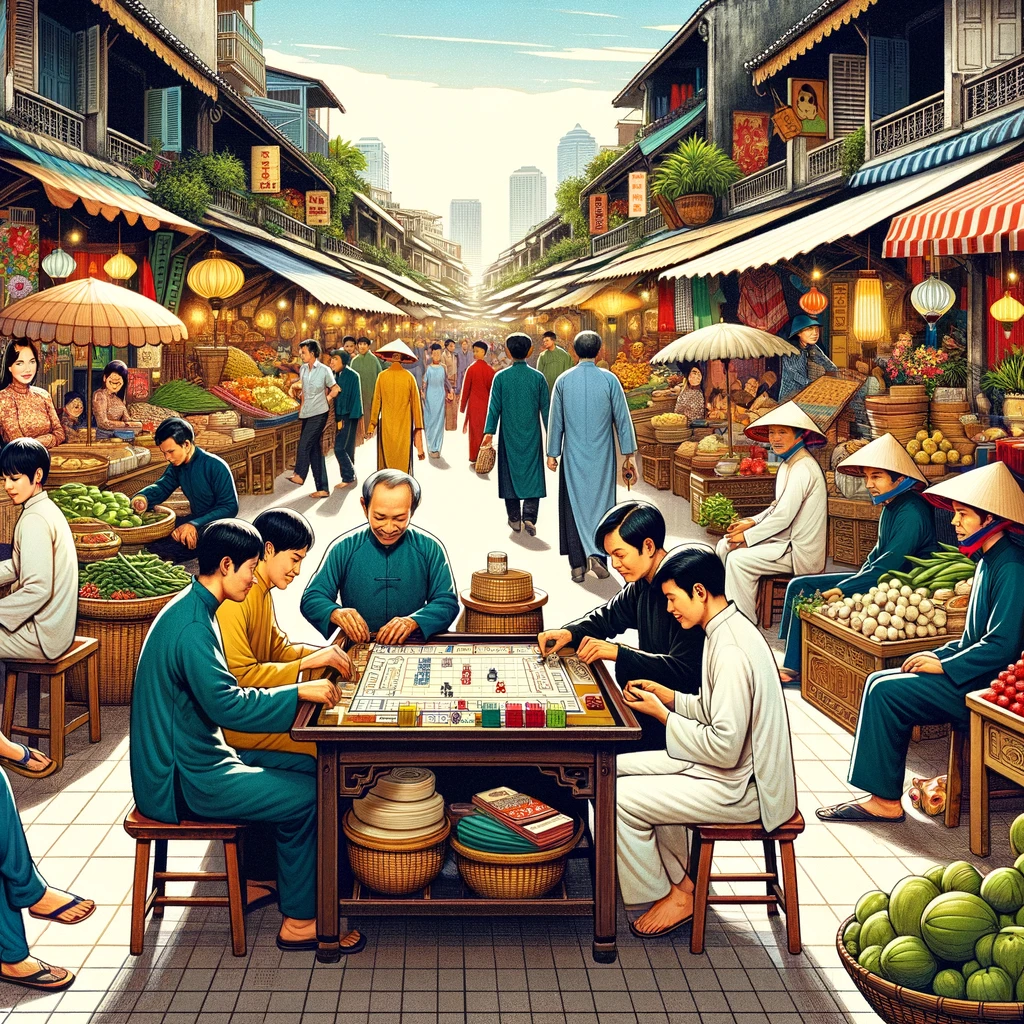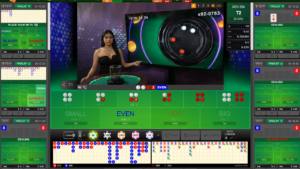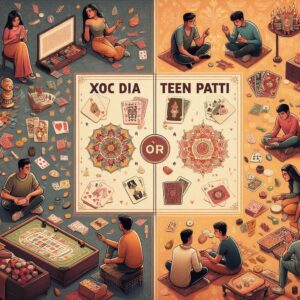Tai Xoc Dia: Exploring Vietnam’s Timeless Gambling Tradition

AI Generated Image
Tai Xoc Dia, also known as “Shaking the Plate,” is a traditional Vietnamese gambling game that blends elements of chance and strategy. Originating in Vietnam, this game has been enjoyed by generations, particularly during festivals, family gatherings, and social events. In this extensive guide, we will delve into the rich history, intricate rules, strategies for success, cultural significance, modern adaptations, and its enduring appeal.
Origins and History of Tai Xoc Dia
The origins of Tai Xoc Dia trace back to ancient times in Vietnam, with its roots embedded in the cultural fabric of the region. Historical records suggest Tai Xoc Dia surged in popularity during the Ly and Tran dynasties (11th to 14th century). Initially, played with basic materials like stones or wooden discs, it appealed to all.
As centuries passed, Tai Xoc Dia underwent gradual transformations, adapting to changing societal norms and technological advancements. The game’s evolution saw the introduction of more refined components, including dice and trays with animal markings, which are characteristic of the modern version played today. Despite these developments, its essence o remained intact, with its simple yet captivating gameplay captivating players across generations.
Throughout its history, Tai Xoc Dia has served as more than just a form of entertainment; it has also served as a cultural touchstone, embodying the spirit of camaraderie and shared experiences. Played during festive occasions and social gatherings, it has become synonymous with unity and community bonding in Vietnamese society. Its enduring popularity speaks volumes about its significance, as it continues to captivate players with its timeless appeal and rich cultural heritage.
Rules and Gameplay of
Tai Xoc Dia involves a circular tray with six indentations, each representing an animal: chicken, duck, goat, crab, shrimp, and fish. Players bet on the animals that will appear face up after shaking.
Upon placing their bets, a dealer takes charge of shaking the tray, causing the dice within to roll and determine the outcome. Players experience the thrill of victory or the agony of defeat based on whether their selected animals match the revealed results.
Tai Xoc Dia’s charm lies in its simplicity and the anticipation it builds as the dice roll, heightening excitement among players. Despite its straightforward rules, it offers strategic depth, engaging players with complexity.
Players must carefully consider their betting choices, weighing factors such as probability and risk to optimize their chances of success. This blend of chance and strategy contributes to Tai Xoc Dia’s enduring popularity among gamblers in Vietnam, who relish the game’s blend of excitement and skill.
As players immerse themselves, they experience the joy of anticipation and the satisfaction of strategic decision-making. Whether they emerge victorious or face defeat, the game offers a captivating and immersive experience that keeps players coming back for more, making it a beloved tradition in Vietnamese gambling culture.
Strategies for Success
In Tai Xoc Dia, where luck plays a significant role, seasoned players often rely on strategic approaches to improve their odds. One such tactic involves spreading bets across multiple animals on the circular tray. By diversifying their bets, players aim to minimize potential losses while maximizing their chances of securing a winning outcome. This strategy allows them to hedge their bets effectively, ensuring that they remain competitive regardless of the dice’s final rolls.
Furthermore, astute players pay close attention to patterns and trends observed in previous rounds of Tai Xoc Dia. By analyzing past results, they may identify recurring sequences or detect hot streaks among specific animals. Armed with this information, players can adjust their betting strategies accordingly, capitalizing on favorable trends while avoiding potential pitfalls. However, it’s essential to recognize that outcomes are inherently random, and past performance does not guarantee future success. While pattern recognition can offer insights, it’s crucial to approach each round with a healthy dose of skepticism and realism.
Moreover, some players adopt a more conservative approach, focusing on managing their bankroll effectively. By setting clear betting limits and adhering to them rigorously, players safeguard their finances and extend their gaming sessions. Responsible bankroll management is essential, ensuring that players can enjoy the game without risking financial strain. Ultimately, while strategies can enhance the overall gameplay experience, it remains a game of chance, where luck ultimately determines the outcome.
Cultural Significance of Tai Xoc Dia
Tai Xoc Dia holds a profound cultural significance in Vietnam, ingrained deeply within the nation’s social fabric. Its prominence is particularly notable during Tet (Lunar New Year) and various festive occasions, where it serves as a focal point for social gatherings and communal celebrations. Families and friends come together around the Tai Xoc Dia table, engrossed in the spirited gameplay and camaraderie it fosters.
More than just a pastime, it embodies Vietnamese identity and heritage, symbolizing cherished traditions passed down through generations. Tai Xoc Dia’s inclusion in cultural events highlights its centrality in Vietnamese culture, bringing people together regardless of differences. Played in various settings, it fosters unity among individuals of all backgrounds, bridging divides and fostering communal bonds.
The game’s enduring popularity is a testament to its ability to forge connections and strengthen community bonds. Through Tai Xoc Dia, generations come together to uphold time-honored customs and rituals, preserving cultural heritage for future generations. Its inclusion in festive celebrations reinforces its status as a cherished tradition, cherished for its ability to evoke feelings of nostalgia and belonging.
Essentially, Tai Xoc Dia symbolizes Vietnamese values and traditions beyond mere chance, embodying community, unity, and shared experiences. Its omnipresence underscores its role in preserving Vietnam’s cultural heritage, deeply cherished by its people.
Modern Adaptations of Tai Xoc Dia
In response to the digital age, Tai Xoc Dia has adapted to the digital age with online versions, replicating traditional gameplay with realistic graphics and immersive features. Its introduction to online platforms has significantly broadened its audience beyond the borders of Vietnam. Gamblers worldwide are captivated by this unique gambling experience and its rich cultural heritage, seeking immersive and thrilling gameplay. Additionally, mobile gaming democratizes access, allowing convenient play on smartphones or tablets. This newfound accessibility has played a pivotal role in sustaining the game’s popularity and relevance in the contemporary gaming landscape.
Moreover, the transition to digital platforms has introduced innovative features and functionalities, enriching the experience for modern players. Enhancements like live dealer options and multiplayer modes cater to evolving gamer preferences, ensuring Tai Xoc Dia’s vibrancy for years. Advancing technology is poised to further innovate it, cementing its status as a beloved cultural treasure with enduring global appeal.
Conclusion: Embracing Tradition in a Modern World
In conclusion, Tai Xoc Dia is treasured in Vietnam for its simplicity, excitement, and community. It captivates players with its unique appeal. As technology progresses, it will undoubtedly evolve and flourish, ensuring its legacy perseveres across future generations. Through its timeless appeal and adaptability, Tai Xoc Dia remains a testament to the enduring significance of cultural traditions in an ever-changing world.






